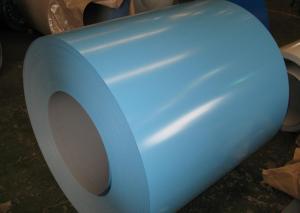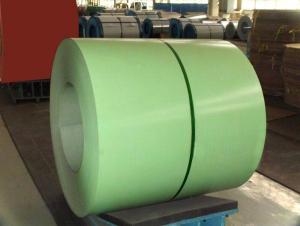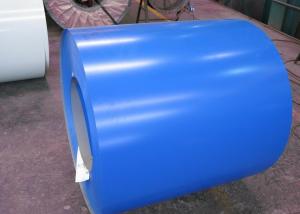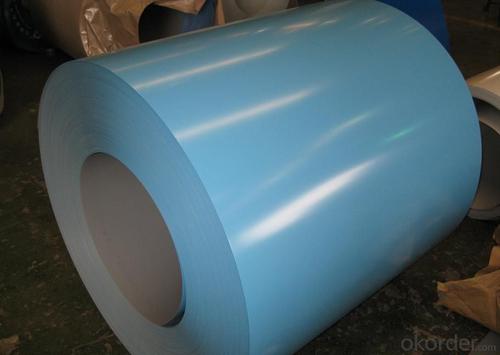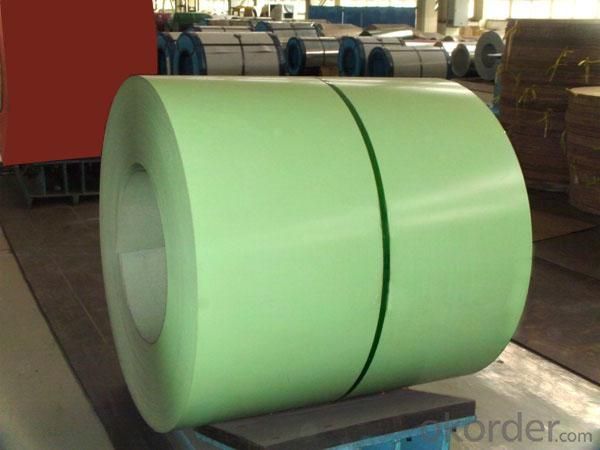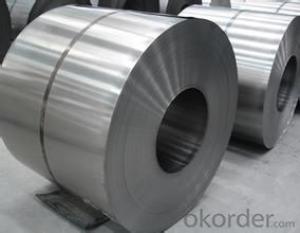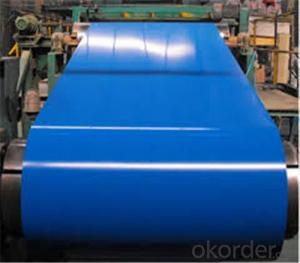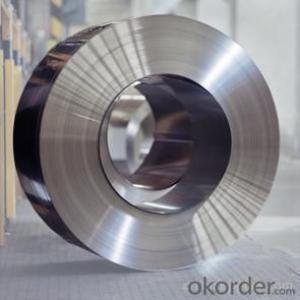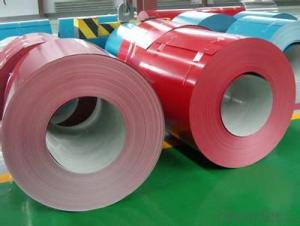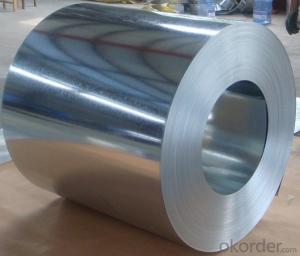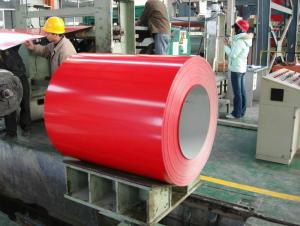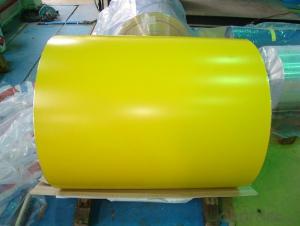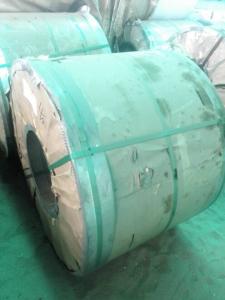Color Coated Pre-Painted Steel Sheet or Steel Coil in High Quality
- Loading Port:
- Shanghai
- Payment Terms:
- TT or LC
- Min Order Qty:
- 50 m.t
- Supply Capability:
- 10000 m.t/month
OKorder Service Pledge
OKorder Financial Service
You Might Also Like
1.Structure of Color Coated GI/GL Steel Coil Description
With GI (aluzinc) as base metal, after pretreatment (degrease and chemical treatment) and liquid dope with several layers of color, then after firing and cooling, finally the plate steel is called pre-painted galvanized (aluzinc) steel. Pre-painted galvanized steel is good capable of decoration, molding, corrosion resistance. It generally displays workability, durability and weather resistance.
2.Main Features of the Color Coated GI/GL Steel Coil
• Excellent corrosion resistance
• Excellent weather resistance
• Capability of decoration, molding, corrosion resistance
• Workability, durability
• Excellent heat resistance performance
• High strength
• Good formability
• Good visual effect
3. Color Coated GI/GL Steel Coil Images
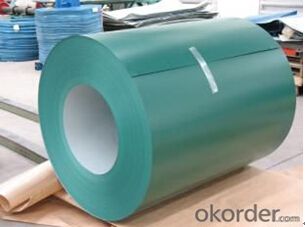
4.Color Coated GI/GL Steel Coil Specification
Quality standar: JIS G3312 CGCC & CGLCC
Hardness of P: Both soft and hard quality are available
Surface finish: with or without protect film
Thickness : 0.14-1.20 mm
Width : 914mm, 1000mm, 1220mm and 1250mm, thickness 600-1250mm is available
Finish by coil or sheet: Both sheet and coil are available
8Zinc coating: 60-275G/M2, both sides
Paint thickness for top side : 5 micron primer + (10-20) microns modified polyester, green color.
Paint thickness for back side: (5-10) microns Epoxy
Weight per coil: 4-6 tons, also can be upon customer's requirements
Max loading weight in one 20ft container : 25 tons generally
5. FAQ of Color Coated GI/GL Steel Coil
We have organized several common questions for our clients,may help you sincerely:
1. What is the minimum order quantity ?
Our MOQ is 50mt for each size. And we will consider to give more discount if you make big order like 1000 tons and more. Further more, the more appropriate payment term your offer the better price we can provide.
2. How long can we receive the product after purchase?
Usually within thirty working days after receiving buyer’s advance payment or LC. We will arrange the factory manufacturing as soon as possible. The cargo readiness usually takes 15-25 days, but the shipment will depend on the vessel situation.
3. How to guarantee the quality of the products?
We have established the international advanced quality management system,every link from raw material to final product we have strict quality test;We resolutely put an end to unqualified products flowing into the market. At the same time, we will provide necessary follow-up service assurance.
- Q: Explain how you could make plastic sink and steel float?
- you can use the steel to make a hollow box, or a ship. There are thousands of steel ships floating in the oceans. plastic, specific gravity ranges from 0.6 to 2, so the higher density ones will sink. Here are some that will sink: Nylon (Polyamide) 1.15 g/mL Plexiglass (Polymethylmethacrylate or PMMA) 1.19 g/mL Lexan (Polycarbonate) 1.2 g/mL PVC (Polyvinyl chloride) 1.16-1.38 g/mL PETE (Polyethylene terephthalate) 1.38-1.39 g/mL .
- Q: I worked REALLY HARD basically begged my dad to let me stretch my ear lobe piercings. He finally said yes, as long as I don't pass 2g. c: So, we went to Hot Topic to buy tapers, but I don't know if I should get Steel or Acrylic tapers. Which ones are better to start off with?
- Steel
- Q: What are the common coil thicknesses available for steel coils?
- The available thicknesses for steel coils, which are commonly used in different industries and applications, can vary depending on specific requirements. The range of coil thicknesses for steel typically falls between 0.5mm and 3mm. In lightweight applications or situations where flexibility is necessary, thinner steel coils with thicknesses ranging from 0.5mm to 1.5mm are often preferred. These thinner coils find suitability in automotive body panels, roofing, and general sheet metal fabrication. On the other hand, for applications that demand higher strength and durability, thicker steel coils with thicknesses ranging from 1.5mm to 3mm are frequently employed. These thicker coils are commonly seen in heavy-duty construction, structural components, and industrial equipment manufacturing. It is important to keep in mind that these mentioned ranges are general and can be subject to variation depending on specific project requirements or customer preferences. Steel coil thicknesses can be tailored to meet specific needs, providing greater flexibility across various industries.
- Q: What are the common applications of steel coils?
- Steel coils have a wide range of applications, commonly used in industries such as automotive, construction, manufacturing, and appliances. They are utilized for making various products including automobiles, pipes, electrical appliances, roofing, and packaging materials.
- Q: This needs to be in a percentage by mass. Could you please also reference where this info has come from. Thanks.
- Graphite is a lot lighter and will allow you to generate more swing speed and probably greater distance. I hit my graphite clubs about one club longer than my steel shafts. But, my steel shafts are far more accurate. I find I hit a lot more greens in regulation using my steel shafted irons than I do with my graphites. Since accuracy is far more important than distance for most people, I choose the steel shafted irons most of the time. You will NEVER see a professional or a low handicapper using graphite irons for this reason.
- Q: What are the common coil sizes available for steel coils?
- The common coil sizes available for steel coils vary depending on the specific industry and application. However, there are several standard coil sizes that are commonly used across different sectors. These include 36-inch, 48-inch, 60-inch, and 72-inch coil widths. In terms of coil diameter, the most common sizes are typically between 20 inches and 24 inches. Additionally, coil weights can range from a few thousand pounds to several tens of thousands of pounds, depending on the type of steel being coiled and the intended use. It is important to note that these sizes may vary among different steel manufacturers, so it is always advisable to consult the specific supplier or industry standards to determine the available coil sizes for a particular steel product.
- Q: What are the common defects in steel coil finishes?
- Steel coil finishes can be affected by various defects that can impact both their appearance and functionality. Before using or selling the coil, these defects may need to be addressed. One common defect is coil breaks, where the steel strip breaks during winding or unwinding. If not dealt with, this defect can cause a discontinuity in the coil's surface and potentially lead to further damage. Another defect is edge wave, which refers to a distortion or waviness at the edges of the coil. This can occur during the rolling or cooling process and can affect the coil's flatness and uniformity. Corrosion is another issue that can arise if steel coils are not properly protected or stored. This can result in rust and degradation of the steel, impacting its strength and appearance. Streaks and stains can appear on the surface of steel coils due to improper cleaning or contamination during production. These defects can affect the aesthetic appearance of the steel and may need to be addressed before use. Scratches and dents can occur during handling, transportation, or storage of steel coils. These defects can impact the flatness and surface quality of the steel and may require repairs or adjustments. If a coating or paint is applied to the steel coil, several defects can arise, including blistering, peeling, or uneven application. These coating defects can affect the durability and appearance of the steel. It's important to note that the severity of these defects can vary, and different methods of repair or mitigation may be needed. Regular inspections and quality control measures can help to identify and address these defects before they become more significant issues.
- Q: On a fixie frame what should i get an aluminum frame or a steel frame
- I'm afraid you have opened a can o'worms. Aluminum as a material is roughly 1/2 the weight of steel. Aluminum as a material is also roughly 1/3 the strength of steel. his means you need 3 times more aluminum to make a frame as strong as steel which makes the aluminum frame 25% heavier. That being said, well designed and more expensive aluminum frames can easily weigh less than low zoot steel. Buying a cheap bike with an aluminum frame will ALWAYS weigh more than a middle of the road bike with a steel frame. ...and THAT being said, high end steel can easily weigh less than a high quality aluminum frame... note we are talking frames in the $2000 range- just for the frame. So, based on your explanation and attendant budget of the bikes you are considering, buy the steel bike. You won't be losing or gaining anything... except saving money.
- Q: What are the different types of steel coil edge conditions?
- There exist various steel coil edge conditions, each tailored to specific needs and uses. The most prevalent categories are as follows: 1. Mill Edge: The default edge condition for hot-rolled steel coils, wherein the edges remain untouched after the rolling process. This condition is characterized by a slightly rough and uneven surface. 2. Slit Edge: Achieved by cutting the coil across its width to obtain narrower strips. This condition is typically smoother and more uniform than mill edge, making it ideal for applications requiring a clean and precise edge. 3. Trimmed Edge: Achieved by eliminating irregularities and imperfections from the coil's edges. This process yields a straight and smooth edge, suitable for applications necessitating a precise and uniform surface. 4. Deburred Edge: Created by removing burrs or sharp edges from the coil. Commonly used in safety-oriented applications to eliminate potential hazards associated with sharp edges. 5. Round Edge: Attained by rounding the corners of the coil. Often employed in applications requiring easy handling or when preventing damage to other materials or surfaces is crucial. 6. Slit and Deburred Edge: Combines the advantages of both slit and deburred edge conditions. Involves cutting the coil into narrower strips and subsequently removing any burrs or sharp edges, resulting in a clean and safe edge. Each of these edge conditions serves a distinct purpose and is selected based on the specific requirements of the application. By comprehending the various types of steel coil edge conditions, one can choose the most appropriate option to ensure optimal performance and safety.
- Q: I know that it is used for katanas and swords but what is it and is it good i am pretty sure that it is the process of the steel but can I have a little more information.
- It's a special type of steel that was made in Syria. It is used to make swords or knives. It's mostly used in Middle East and South Asia.
Send your message to us
Color Coated Pre-Painted Steel Sheet or Steel Coil in High Quality
- Loading Port:
- Shanghai
- Payment Terms:
- TT or LC
- Min Order Qty:
- 50 m.t
- Supply Capability:
- 10000 m.t/month
OKorder Service Pledge
OKorder Financial Service
Similar products
Hot products
Hot Searches
Related keywords
